This is a character-specific preview that touches on the history of each fighter. It is spoiler-free. Hype yourself up one more time before the midnight launch!
Bowser
If they were handing out global (or galactic) domination on the basis of perseverance, Bowser would have seen all of his considerable desires satisfied long ago. As it stands, the King of the Koopas has found himself thwarted by Mario at every turn since they first tangled in Super Mario Bros. on the NES in 1985.
Bowser cuts an intimidating figure with his enormous armored body, and this great girth is matched only by the size of his tyrannical ambitions. Whether he's been snatching Yoshi eggs, transforming kings into strange creatures, or trying to create his very own galaxy, the primary object of Bowser's designs always seems to be kidnapping Princess Peach. While he's yet to succeed in claiming her and her kingdom as his own, there's no keeping this indefatigable antagonist down.
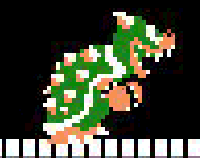
Bowser brought a villainous presence to the Smash Bros. series for the first time in Melee, and returns looking meaner than ever in Brawl. King Koopa is inevitably a heavyweight character, making him painfully slow to move about the stage. However, this proves it difficult to smash him off the stage.
Aside from his trademark fiery breath, Bowser's special moves are all about brute force. The Bowser Bomb uses his immense weight to bludgeon opponents from above, while his body slam has taken on a new aerial dimension as Bowser first grabs his victim, then leaps into the air before driving them into the ground—or bottomless pit—below. Activating a smash ball transforms Mario's nemesis into the even more fearsome Giga Bowser, who is free to wreak havoc without fear of harm for a short while.
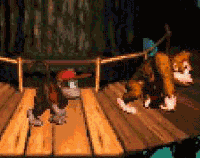
Diddy Kong
Every good video game character needs a sidekick. Diddy Kong, Donkey Kong's "little buddy," first appeared in Donkey Kong Country for the SNES in 1994. Big DK placed Diddy in charge of guarding his banana hoard. When the bananas were stolen by King K. Rool, Donkey and Diddy set off to retrieve them. Following the success of Donkey Kong Country, Diddy appeared in multiple sequels. In 1997 Diddy took on kart racing with Diddy Kong Racing on the N64. Unlike other racing titles at the time, it also included airplanes and hovercrafts.
In his first Smash Bros. game, Diddy Kong is a much more athletic character than his larger friend. He scampers about the stage just like one would expect a monkey to move. Armed with his Peanut Popgun he can shoot delicious nuts at his opponents, which can summarily be consumed for a health boost. His rocket barrels let him fly about the stage. A light and fast character, his attacks are designed for a hit and run strategy, getting in quick hits before retreating to safety.
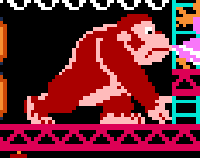
Donkey Kong
Donkey Kong is one of Nintendo's most historic characters. The 1981 arcade game bearing his name, responsible for establishing Nintendo as a major player in the industry, also starred Mario (then known as Jumpman) in his first outing. The King of Swing kidnapped Mario's beloved Pauline, forcing him to hurdle barrels and overcome many other obstacles to rescue the classical damsel in distress.
In the sequel, Donkey Kong Jr., roles were reversed as Mario imprisoned Donkey Kong, leaving players to take control of the gorilla's son to climb to his rescue. Following a further arcade sequel and console conversions, DK faded into relative obscurity. It wasn't until 1994 that a Kong revival began with a vast expansion of the arcade classic's gameplay in Donkey Kong for the Game Boy. However, it was Donkey Kong Country on the SNES that elevated the ape back to high renown.
This was not your father's Kong, instead featuring a grown-up DK Jr. in his own side-scrolling platformer, while the original irate ape was re-imagined as a doddering know-it-all named Cranky Kong. Though its gameplay was fairly orthodox, DKC's groundbreaking pre-rendered graphics stunned even the most seasoned of 16-bit gamers, and established the DK character design that endures to this day.
A veteran of both previous Smash Bros. titles, DK is the series' original heavyweight character. Brute strength is his specialty, making extensive use of his mighty fists both for smash attacks and special moves. His charged wind-up punch delivers KOs as satisfyingly as ever, but oddly, DK's final smash is less physically aggressive. Drawing on his recent foray into rhythm games, DK drums on a pair of his trademark bongos, inviting players to press along to the beat of classic Kong music in order to deal more damage to foes within range.
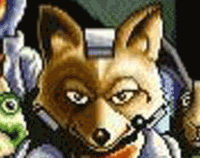
Fox
Fox McCloud burst onto the gaming scene in 1993 as the hero of Star Fox, a trailblazing 3D on-rails shooter for the SNES. In order to create a personal connection with the player that simple polygonal graphics could not achieve alone, the Star Fox team was created to serve as pilots for the game's Arwing space fighters. Fox's design is said to have been based on Nintendo's creative icon, Shigeru Miyamoto.
Following in his late father's footsteps as the leader of the Star Fox team, Fox has faced multiple interplanetary menaces in the series, most notably that of Andross and the unscrupulous Star Wolf team in 1997's Star Fox 64, a retelling of the original Star Fox story. Since then, Fox has branched out, perhaps venturing outside of his customary Arwing more frequently than many fans would have liked. In his most recent appearance, Star Fox Command, Fox returned to Arwing combat full-time in order to once again safeguard the Lylat System.
Now a three-time Smash Brother, Fox appears in Brawl in a more detailed interpretation of his Command guise. Fleet-of-foot with far ranging attacks, Fox is a formidable opponent. His reflector can negate projectile weapons, and while his own blaster might not slow opponents down very much, its rapid rate of fire can incur damage quicker than you might think. In a spectacular final smash, Fox summons his Landmaster tank to crush and/or blast the opposition into oblivion. The tank is fully controllable; tilting downwards activates a roll, and jumping can "escort" foes off the stage by activating thrusters that cause the hulking war machine to hover in midair.
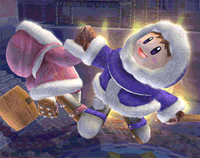
Ice Climbers
The Ice Climbers will be making their second Smash Bros. appearance as playable fighters in Brawl. This lovable duo first appeared in the original NES title, Ice Climber, which was a launch title for the system. The goal of the game was to simply climb to the summit of a mountain, using hammers to bash through the different levels. It featured a two player cooperative experience where the first player played as Popo (in blue) and the second player played as Nana (in pink).
In Brawl, the player takes control of Popo while Nana is controlled by the computer, working in unison with Popo to maximize attacks and recovery distance. Unlike in Melee, it is not possible to take direct control of Nana through a character color change. Most of their moves focus around the use of their hammers and the bitter cold to pummel and freeze their opponents. Although Popo can still stay in the fight after losing Nana, his singular attacks are weakened significantly and he loses the ability to vertically recover after being knocked off the stage. Teamwork and coordination is the key to success with this unique tag team.

Ike
When Marth and Roy were included as playable characters in Melee, it raised a few eyebrows in North America. The vast majority of players had never played a Fire Emblem game before, and a good chunk of them had probably never heard of the series. After a string of successful Fire Emblem games in the States, the series has gone from unknown to well-known among American gamers.
Fire Emblem representation is back in Brawl in the form of the hard-hitting Ike. This time around the torch bearer is from the GameCube game, Fire Emblem: Path of Radiance. In that game, Ike fights as a mercenary along side his father until he stumbles upon and unconscious princess in need of aid.
In Brawl, Ike uses his sword and slick moves to cut down his foes. Ike has a few moves that will be familiar to Marth and Roy fans, just as a counter attack and a chargeable fiery strike of his sword. He also has a quick strike with good range and speed. In general, Ike is one of the most powerful characters in the game, but that power comes with a price. He is also generally slower than most of the other characters.
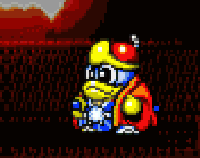
King Dedede
King Dedede makes his first Smash Bros. appearance in Brawl. The primary rival of Kirby, King Dedede is the seemingly self-proclaimed ruler of Dream Land. The blue penguin monarch has appeared in almost every Kirby title. He generally is portrayed as a selfish, but not-really-evil rival of Kirby, but still comes of as bossy (and is also regularly a boss character). However, a few times he has teamed up with Kirby to fight a more evil enemy, such as in Kirby's Adventure and in Kirby 64: The Crystal Shards.
Like in the various Kirby games, the King Dedede of Super Smash Bros. Brawl has many of Kirby's abilities. He can float about by puffing himself full of air, and can suck in and shoot out items just like his rival. He wields a large mallet that he uses for many of his physical attacks. He can also summon and throw his lackeys, Waddle Dees, at the other combatants. A heavier character, King Dedede can deal massive damage with a swing of his mallet but is slower at maneuvering and in launching his attacks.

Kirby
Kirby's back in Super Smash Bros. The pink puff from Dream Land first appeared in 1992's Kirby's Dream Land on the GameBoy. As a guardian of tranquility, Kirby's games have had him adventure across Dream Land in order to restore peace, using his ability to float about, suck up enemies, and absorb powers. In his past he has encountered foes like King Dedede, Meta Knight, and Nightmare.
In later games, Kirby has teamed up with Dedede and Meta Knight in order to fight greater evils. He has also repeatedly put his round shape to good use, playing the role of a ball in Kirby in games like Kirby's Dream Course, and Kirby's Pinball. On the GameCube, he took on the racing genre with Kirby's Air Ride.
This is Kirby's third appearance in the series, though not much has changed from his previous forays. He is still very light, and has the ability to float about. Kirby's primary form of offense is still to suck his opponent up and then steal their abilities. However, Kirby brings with him some of the enemy powers from his own games, such as the death-from-above stone attack, the final cutter blade attack, and a big hammer.
Kirby isn't a powerful character in close combat, but uses his special attacks to even the playing field. His final smash, Cook Kirby, has him suck nearby opponents into a stew, simmer them in a pot for a few moments, and then spit them out along side some healing items.

Link
Nintendo's biggest star this side of Mario, Link will be making his third Smash Bros. appearance with Brawl. His first appearance was in the Legend of Zelda on the Famicom in 1986. He's easily spotted based on his patented green tunic, Master Sword, and shield. When he was first introduced, he was often compared to Robin Hood, but his fame has ballooned over the years, possibly making him Nintendo's second most recognizable character.
The key feature of every Zelda game is Link's ability to collect and use new weapons throughout his quest. His primary weapons have stayed consistent across most of his games, and they make up his arsenal in Brawl. Whereas Link's items in Melee were based off his appearances in the N64's Ocarina of Time, the Brawl version of Link comes direct from the Wii launch title, Twilight Princess.
His Gale Boomerang can pick up items (or enemies) and return them to him. The clawshot grabs foes for some up-close damage. Link's regular assortment of bombs and arrows are also available. And just like every Legend of Zelda game, Link attacks with the iconic Master Sword and can deflect most incoming attacks automatically with his shield.
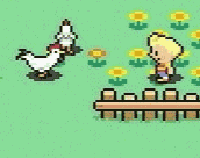
Lucas
Lucas is a newcomer to the Smash Bros. franchise, and his appearance is an unbearable tease to Earthbound/Mother fans who haven't been able to play the Japan-only sequel from which Lucas hails, Mother 3. In Mother 3, Lucas and his companions have to confront the techno-industrial tyranny of the invading pig army. In Super Smash Bros. Brawl, the rather meek Lucas is still a force to be reckoned with, since like Ness, he has a wealth of psionic weapons at his array.
His moveset is mostly similar to that of Ness, but with minor, yet significant changes. He shares the PK Fire, PK Thunder, and PSI Magnet special moves that Ness had, but with his own variations. Lucas uses PK Freeze to stop enemies cold. Instead of Ness' home run bat, Lucas just carries around a regular ol' stick to hit people with. Lucas' grab involves him throwing his Rope Snake to snag opponents or stage ledges. But give Rope Snake some respect! He's actually a character unto himself, another one of Lucas' companions from the Mother 3 game.
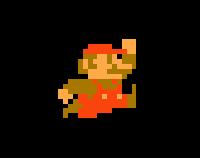
Mario
What is there to say about Nintendo's beloved foremost mascot, Mario? Industry icon, dependable hero, unlikely sports star, and occasional plumber, Mario is synonymous with Nintendo itself. The definitive video game character, Mario's very design was a function of the limitations of the medium when he first put his jumping abilities to the test in overcoming all the barrels a giant ape can throw in the classic Donkey Kong arcade game (1981). Then known only as Jumpman, Mario's famous mustache was created out of necessity in order to define a nose in just a few pixels, while the signature red cap served the purpose of avoiding the complications of giving him visible hair.
His next arcade appearance gave Mario both his name (thanks to Nintendo of America's mustachioed landlord) and a brother, Luigi, in 1983. But it was Super Mario Bros. for Nintendo's first home console that catapulted the Italian plumber to global prominence. Players were introduced to the Mushroom Kingdom and its Princess for the first time, and have been trying to rescue them from the vile Bowser and his armies ever since.
With its remarkable breakthroughs in gameplay, Super Mario Bros. was instrumental in reviving the failing games industry of the mid-1980s, and put Nintendo squarely at the top of it for many years to come. Since then, Mario has had many adventures, several of which have been hailed as among the greatest games ever created, including his brilliant and truly revolutionary first foray into the third dimension, Super Mario 64.
Mario is naturally a veteran of the previous Smash Bros. games, and much like in the sports titles that bear his name, the portly plumber has always been the series' quintessentially balanced combatant. In Brawl, Mario reprises his trusty fireball, cape, and jumping uppercut techniques, comprising a solid set of moves for attacking from any distance and misdirecting opponents.
However, Mario has brought a souvenir from his 2002 vacation to Isle Delfino with him on this occasion, and so the maligned water pack F.L.U.D.D. serves as his new down special move. The water jet inflicts no damage whatsoever, but can be charged up to blast foes out of the arena into defeat. His old Mario Tornado is now only a standard airborne attack.
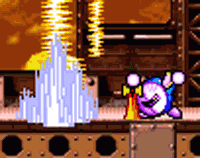
Meta Knight
Meta Knight makes his first appearance in the Smash Bros. series with Brawl. An enigmatic figure from the Kirby series, he is not "evil" in the traditional sense. He is often fighting against Kirby, whom he regards as a rival. He first appeared in Kirby's Adventure for the NES. Meta Knight tried to prevent Kirby from obtaining a piece of the Star Rod so it could not fall into Nightmare's hands. Only in the Kirby Super Star sub-game, Meta Knight's Revenge, was Meta Knight truly a villain. He sought to capture Dream Land and end the lazy ways of its inhabitants.
Meta Knight is a member of a new type of fighter class in the Smash Bros. series, the winged flyer. His dark cape doubles as a set of wings, which let him glide around the stage and jump several times. Unlike his rival, who simply floats about, his flight has weight and is achieved by flapping his winged cape. His primary weapon is an ultra-quick sword with which he can create a tornado or drill attack. His light weight and fast movements make him somewhat weak, though he can make up for that in his rapid attack strings.
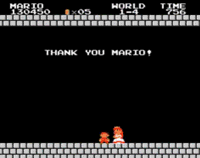
Peach
Peach, the perpetually purloined princess of the Mushroom Kingdom, has embodied the final goal of several of the greatest games ever made in the Super Mario Bros. series. It was not until dedicated fans had rescued her several times over that she officially became known as Peach in Western territories, with the 1996 release of Super Mario 64. Previously, she had been referred to only as Princess Toadstool, despite always going by Peach in Japan.
On the rare occasions that she is not in the clutches of the amazingly persistent Bowser, the Princess regularly participates in Mario's sporting get-togethers and has been known to perform heroics of her own. In 1988's Super Mario Bros. 2, Peach joined in the action, utilizing her unique floating ability to cross even the widest of chasms with ease. She has also taken active roles in Mario's role-playing endeavors, and has starred in her very own platform adventure to (oh the irony) rescue Mario in Super Princess Peach for Nintendo DS.
Returning from her Smash Bros. debut in Melee, Peach once again employs a range of abilities strongly influenced by her role in Super Mario Bros. 2. Light and graceful, the Princess can float for a few seconds in mid-air, proving most useful when trying to stay above the fray created by a deadly item attack or final smash. Her special moves, including the ever-intimidating Vegetable Pluck and Toad Shield, may not seem very powerful, but it is Peach's excellent array of regular attacks that ensure she is much more than just a defensive player. She can unleash a whirlwind of blows that rapidly increases the damage meters of her opponents, setting them up for an up-smash that sends them flying into the distance.
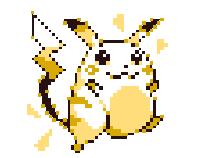
Pikachu
The first Pokemon games didn't feature Pikachu on the cover. But that oversight was soon corrected: Pokemon Yellow featured Pikachu front and center on the cover of the box, and Pikachu was also Ash's chosen companion in the Pokemon animated series. Pikachu isn't just any electric rodent. Pikachu has become a Pokemon Ambassador. That's why he's been in Super Smash Bros. ever since the first game, and has never needed a Pokemon Trainer standing in the background calling the shots. Pikachu is, to put it simply, the man.
Of course, Pikachu returns to Super Smash Bros. Brawl with all the energy and spark we've come to expect from the little guy. His move set remains mostly untouched, consisting of representations of real moves from the Pokemon franchise: Thunder Jolt, Skull Bash, Quick Attack and Thunder. Unfortunately for Pikachu fanatics, Thunder calls down a pillar of lightning from a cloud that appears a set distance above the pokemon, as in Super Smash Bros. Melee, as opposed to mercilessly firing from the very ceiling of the stage like in the original game.
Pikachu does get a new final smash move called Volt Tackle. This turns Pikachu into a Pika-Powerful ball of blue electrical energy that careens around the screen wildly, crashing into other characters, or unleashing crackling electrical attacks that can damage anyone near the electirified Pokemon. But the real exciting addition to this lovable icon is his two new taunts! Oooh! Too cute!
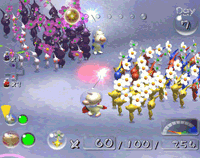
Pikmin & Olimar
Olimar and the Pikmin are new arrivals in the Smash Bros. series. They hail from the 2001 GameCube title Pikmi, and the 2004 sequel Pikmin 2. In the original, Captain Olimar was flying through space when he is forced to crash land on an uncharted planet. The pieces of his ship were scattered across the alien world, on which he is the size of an insect. Using the indigenous, multi-colored Pikmin as volunteers, Olimar was able to collect the pieces of his ship and return home. In exchange, he kept the battalions Pikmin relatively safe from hazards of their own world.
Olimar and the Pikmin are a new type of fighter in Brawl. He plucks Pikmin from the ground, not unlike how Peach plucked turnips in Super Smash Bros. Melee. The ability to manage your Pikmin well in the GameCube games translates over to Brawl, where different Pikmin possess different attack abilities when thrown at opponents. Olimar can reorganize his troupe of up to six Pikmin at any time, reshuffling certain colors to the front of the line. It's important that he keep some available at all times, since his recovery move forms a chain of Pikmin. Without Pikmin, Olimar is very vulnerable. However, he does have some potent standard and smash attacks to finish the job the Pikmin have done when the situation calls for it.
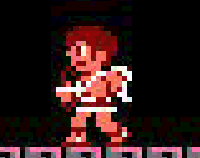
Pit
Pit is a newcomer to the Smash Bros. series. He first appeared in the 1986 title Kid Icarus for the NES. Pit, an angel, hailed from Angel Land which was ruled by the goddess Palutena. When the evil Medusa launched an attack on Angel Land, and captured Palutena, Pit was called on to escape Medusa's underworld and rescue the goddess.
Gifted with wings, and armed with a magical bow, Pit climbed a treacherous tower to reach his home and restore order to Angel Land. A brutally hard title, Nintendo Power issue #204 said Kid Icarus lets you, "Jump like Mario, collect items like Link, and shoot enemies like Samus."
Pit is another winged fighter, the new kind of character to the Smash Bros. franchise. His wings give him the ability to jump multiple times and glide through the air. Pit's recovery move allows him infinite flight for a short period of time, making him very difficult to knock away from the stage. However, his lightweight makes it hard for him to regain control of himself before being smashed off the stage.
His other attacks include a bow, which gives him a ranged attack similar to that of Link's bow. Pit's arrows change direction, or even shot straight up into the air, based on player control. The bow can also be split in half, creating two swords. When using his swords he is fast, but that speed means his attacks are less powerful than some of his other sword-wielding peers.
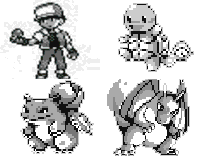
Pokemon Trainer
In past Smash Bros. games, individual Pokemon were playable, like Pikachu and Jigglypuff. While the return of Pikachu confirms that that will continue, Pokemon Trainer will change that up a bit with his first appearance. Like in the original Pokemon games, the trainer himself won't ever actually take part in the battle. Instead he'll call on one of three Pokemon, who can be switched in and out of the battle dynamically, in a similar fashion to the Zelda/Sheik switch.
The three Pokemon in his possession represent the three starters from the original Pokemon games, Red and Blue. In order to add to the strategy involved in switching between them in Brawl, each one is of a different evolutionary level. Squirtle, the water Pokemon that looks like a turtle, is of the first evolutionary level. Ivysaur, the grass Pokemon with a flower bud on his back, is of the second evolutionary level. Charizard, the fire Pokemon that looks like a dragon, is of the third evolutionary level.
Each Pokemon has their own distinct set of special moves. The down special move will switch between them. Switching between them in long matches is crucial, as they will tire after an extended outing, weakening their attacks. When performing a final smash, all three Pokemon will appear and combine the ultimate elemental attack for their type from the original Pokemon games. Squirtle performs a Hydro Pump. Ivysaur unleashes a Solar Beam. Charizard performs a Fire Blast. The combined effect is sure to be super effective.
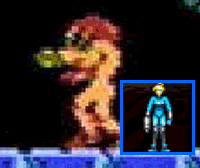
Samus and Zero Suit Samus
Samus Aran is famous for being one of video gaming's earliest heroines, but NES owners were not to know that when they began exploring Metroid's many caverns in 1986. Nintendo purposefully concealed the Power Suit-clad adventurer's gender, leaving it to be revealed as a shocking reward for those who managed to reach the game's finale quickly enough.
Orphaned as a young child by a Space Pirate attack, Samus was raised by the last of the enlightened Chozo race on Planet Zebes, a location she would return to on two occasions to thwart Pirate schemes. Here, Samus received her famous Power Suit and was trained in combat, skills that she would utilize in her career as a bounty hunter.
Following her first mission to halt the use of Metroids by the Pirates, Samus was shot down by enemy ships and lost the use of her suit. As told in Metroid: Zero Mission, Samus was left nearly defenseless in her skin-tight Zero Suit, with only a stun pistol to help her bypass Pirate patrols and reclaim her powers.
Samus appears in Brawl for a third Smash Bros. outing, reprising her array of projectile weapons and classic Screw Attack ability to blast opponents from range and make dramatic recoveries. When she activates a smash ball, Samus unleashes the fearsome Zero Laser, and can dispatch multiple foes with ease. The discharge is so great that Samus' armor falls away afterwards, revealing an entirely different fighter, Zero Suit Samus.
Unencumbered by her heavy suit, Zero Suit Samus is lithe and quick, utilizing her pistol both to stun her enemies and as a laser whip to smack them off the battlefield. The whip can even mimic Samus' grapple beam, attaching to ledges to pull her away from a deadly fall. With the appearance of another smash ball, Samus is able to return to her armored form once more, should she wish to. Players wishing to start a battle as Zero Suit Samus can do so by holding down a shield button as a game begins. Rumor has it there's a way to switch between the two forms at will...
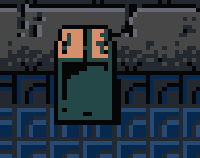
Snake
Solid Snake is perhaps the most shocking newcomer in Brawl. The gritty anti-hero first appeared in the 1987 MSX2 and NES title Metal Gear. A mix of action hero and spy characters, most of the Metal Gear (and Metal Gear Sold) games have revolved around him infiltrating a base and destroying a Metal Gear. His character evolved with the move to 3D into a sarcastic caricature of modern action film heroes. Regardless of that evolution his objectives haven't much changed. He still is charged with dismantling the titular Metal Gears.
Snake really is unlike anything we've seen in Brawl. He was the first third-party character announced for a Smash Bros. title. Fittingly, his play style is all his own. On top of his standard close-quarters combat he can also use a full range of armaments. He can fire off remote missiles, throw grenades, and bury land mines. His move set rewards sneaky, indirect attacks, which falls right in line with his covert ways. Of course, if things get out of hand he can also hide under a box.
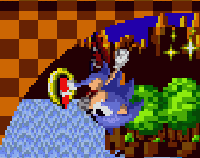
Sonic
Fans everywhere asked for it. EGM once ran an April Fool's story about it. Sakurai gave it to us. Sonic the Hedgehog is now a part of the Brawl. Sega's mascot stands proudly amongst the array of Nintendo characters (and the one Konami character) in the Super Smash Bros. series.
Sonic has been running at speeds above Mach 1 ever since 1991. In his long career he's been a console mascot, a freedom fighter, a tennis player, a hoverboard racer, an Olympic athlete, and though a little undignified, a pinball as well. He brings all this experience to bear in Super Smash Bros. Brawl, with homing attacks from his later games, spin dashes from his earlier ones, his trademark speed, red shoes, and just a hint of rebellion.
And this is all before Sonic goes Super Saiyan for his final smash. Transforming into sparkling golden Super Sonic lets him careen through the air with almost reckless abandon until the effect wears off. And when he crashes into you? Well, as Sonic once put it, "that's no good!"
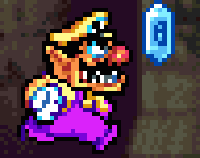
Wario
Wario joins the fray in Super Smash Bros. Brawl. Mario's doppelganger first appeared in 1992's Super Mario Land 2: 6 Golden Coins. Mario's rival since birth, he took over Mario Land by putting its inhabitants under a spell while Mario was away saving Sarasaland. Since then, Wario has served as Mario's antagonist as well as the protagonist in several of his own games.
Generally motivated by his greed, the Wario Land series had Wario fighting characters even more evil than he. Most recently, Wario's greedy quest to get rich, while still being his lazy self, led to him creating his own video game publisher. The WarioWare series saw Wario don a helmet, lose the suspenders, and become a gaming tycoon. The series, which revolves around quirky "microgames," introduced a colorful cast of supporting characters.
In Brawl, Wario is a bit heavier than his non-evil twin, and more powerful. He also has a short reach due to his stubby arms. His special attacks all reflect his "Bad Mario" persona. Using his massive jaw he has the ability to chomp any foe that dares stray too close. He can summon his hog and motor around the stage, posing a serious threat to himself and others.
Being a rather unsavory character, Wario can use his flatulence to literally blast his opponents from the stage; the longer he holds his wind the more powerful the gust. His final smash attack transforms him into his alter-ego Wario Man, who is faster and powers up all his special moves.
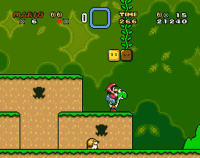
Yoshi
The breed of creatures known as Yoshi was introduced to Nintendo fans in the superb SNES launch title Super Mario World, acting as Mario's hardy steed and faithful companion. Years later, the sidekick would step into a starring role in Super Mario World 2: Yoshi's Island. A radical re-invention of the Mario series, this game saw a near-invincible band of Yoshis tasked with protecting an infant Mario on a long quest to rescue his twin brother from the tantrum-throwing young Bowser. Considered one of the finest of Nintendo's many excellent platform games, Yoshi's Island is undoubtedly this character's finest moment.
Since then Yoshi has kept a fairly low profile outside of Mario's recreational activities, but the adorable dinosaur makes his third Smash Bros. appearance in Brawl. Using a tried-and-true egg-centric special move set, Yoshi is a speedy opponent, possessing an array of range attacks, and the capacity to land multiple blows in rapid succession with both his feet and his tail. On this occasion, Yoshi's Egg Toss has received a potentially valuable upgrade in being able to extend his already considerable flutter jump ability.
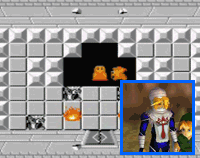
Zelda and Sheik
It's an odd name for a game, and an odd name for a princess. The Legend of Zelda, released in 1987 in North America, was an adventure game about a young hero in green who went on a quest to rescue a princess. While most observers immediately referred to the hero as Zelda, players were always quick to correct, stating "No, Zelda is the princess!" She has always been in need of aid in some form, but often she steps in and helps out as well.
Zelda made her Smash Bros. debut in Melee. Her magical attacks, which are named after the Godesses that created Hyrule, carry a lot of power and versatility. She also had the unique ability to transform into her Ocarina of Time disguise, Sheik, which changed her attacks and speed. This transformation mechanic is a part of Zelda's abilities in Brawl, and was applied to other characters, such as Pokemon Trainer and Samus.
While disguised as a member of the mysterious Sheikah, Sheik helped Link on his quest in the iconic N64 Zelda game. It wasn't revealed that Sheik was Zelda until nearly the end of the game. According to the character profile on the official Dojo blog, the Sheik model used in brawl was at least inspired by a model that was made when considering a possible appearance in Twilight Princess.
Sheik's move set is vastly different than Zelda's. Where as Zelda is a more defensive character, with moves designed to attack from a distance and reflect, Sheik excels more at close combat, with special attacks that aren't as potent as her royal equivalent. Sheik and Zelda share the same final smash, the Light Arrow attack, which pierces anyone in its path. There are subtle differences in the launch direction of those hit by it depending on which form of the character fired it, but it will send foes flying hard either way.
James Jones, Greg Leahy, Carmine M. Red, and Steven Rodriguez also contributed to this article.

